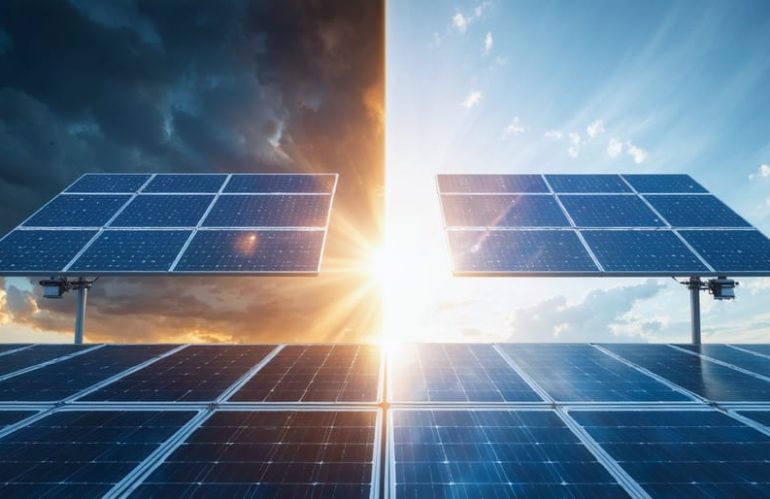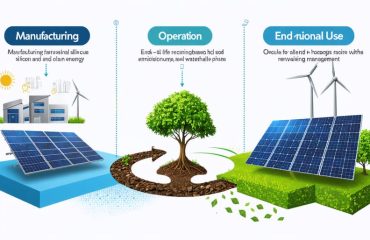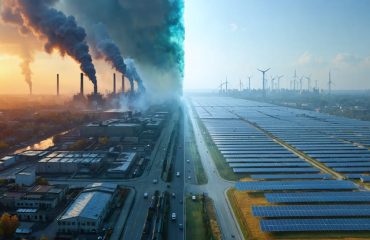Solar panels represent a crucial solution in our fight against climate change, yet their production process raises important environmental considerations. While the environmental impact of solar technology involves significant resource extraction and energy consumption during manufacturing, these initial costs are typically offset within 1-4 years of clean energy production.
Understanding this balance is essential for homeowners and environmentally conscious consumers considering solar investment. The production of solar panels requires mining raw materials like silicon, silver, and aluminum, along with energy-intensive processing methods that temporarily contribute to carbon emissions. However, this environmental investment yields decades of clean, renewable energy that dramatically reduces our dependence on fossil fuels.
Recent technological advances have significantly improved manufacturing efficiency, reducing both production costs and environmental impact. Modern solar panels now last longer, perform better, and require fewer resources to produce than ever before. This progress, combined with increasing manufacturer commitment to sustainable practices, continues to strengthen solar energy’s position as a leading solution for clean energy generation.
For consumers weighing their energy options, these manufacturing impacts should be considered alongside the substantial long-term environmental benefits that solar power delivers.
Raw Materials and Mining Impact
Silicon Mining and Processing
Silicon, the primary material in solar panels, starts its journey as quartz sand. While mining sand might seem straightforward, the process requires careful environmental management to minimize habitat disruption and dust pollution. The good news is that silicon is one of Earth’s most abundant elements, and mining it has a relatively low environmental impact compared to many other mineral extraction operations.
The more significant environmental considerations come during the processing stage. Raw silicon must be refined to achieve the 99.999% purity needed for solar cells. This process requires substantial energy input and involves heating quartz to extremely high temperatures – around 3,000°F. While this energy-intensive process does create a carbon footprint, it’s worth noting that modern facilities are increasingly using renewable energy sources to power these operations.
Some manufacturers are now implementing closed-loop systems that recycle water and processing chemicals, significantly reducing their environmental impact. Additionally, silicon waste from the processing can often be recycled into other industries, such as electronics manufacturing, ensuring minimal material waste.
When considering these impacts, it’s important to remember that the clean energy generated by the final solar panels will offset these initial environmental costs many times over during their operational lifetime.

Rare Earth Elements and Metals
Solar panel production requires several rare earth elements and specialized metals, including silver, tellurium, and indium. These materials are essential for creating efficient solar cells, but their extraction does have environmental implications. The good news is that manufacturers are continuously improving their processes to minimize the impact.
Mining these materials typically involves careful excavation and processing, with modern operations following strict environmental guidelines. For example, silver, which helps make solar panels more conductive, is often obtained as a by-product of other mining operations, reducing the need for dedicated mines. This approach helps maximize resource efficiency while minimizing additional environmental disturbance.
Industry leaders are also developing innovative recycling programs to recover and reuse these valuable materials from retired solar panels. This circular approach not only reduces the need for new mining but also addresses end-of-life concerns. Additionally, researchers are making breakthrough discoveries in using more abundant materials as alternatives to rare earth elements.
It’s worth noting that while the extraction of these materials does have an environmental footprint, the long-term benefits of solar energy significantly outweigh these initial impacts. The materials used in solar panels help create decades of clean, renewable energy that reduces our dependence on fossil fuels.
Manufacturing Process Carbon Footprint
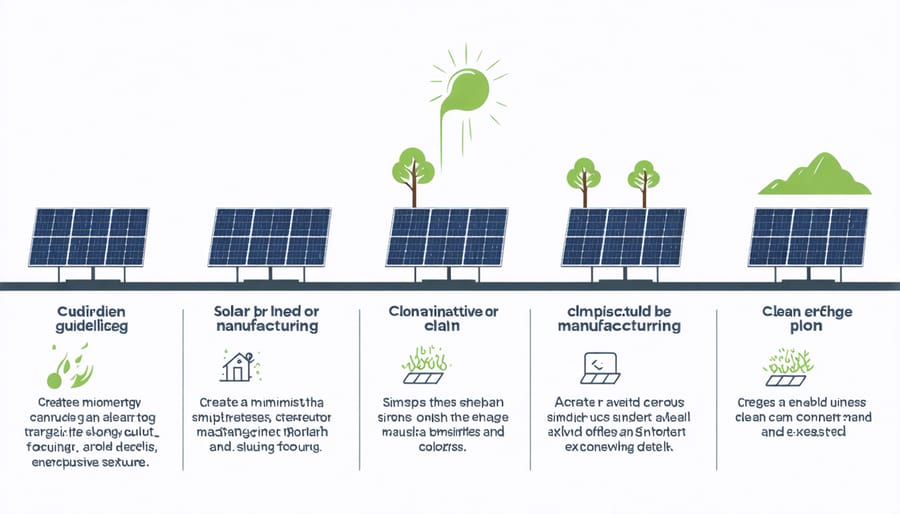
Energy Requirements
The manufacturing of solar panels requires significant energy input, which is a key factor in the overall carbon footprint of solar panels. On average, it takes between 2,000 and 2,500 kilowatt-hours (kWh) of energy to produce a typical residential solar panel. This energy is primarily used in the silicon purification process, panel assembly, and transportation of materials.
The good news is that this initial energy investment is typically recovered within 1-4 years of the panel’s operation, depending on its location and efficiency. Modern solar panels have a lifespan of 25-30 years, meaning they’ll produce clean energy for decades after recovering their production energy costs.
Manufacturers are continuously improving their processes to reduce energy consumption. Many facilities are now powered by renewable energy sources themselves, creating a more sustainable production cycle. Some companies have achieved up to 30% reduction in manufacturing energy needs through improved technologies and streamlined processes.
For homeowners considering solar installation, it’s reassuring to know that the energy invested in production is recovered relatively quickly, after which your panels will generate clean, renewable energy for many years to come. This makes solar panels an environmentally sound choice for long-term energy production.
Emissions and Waste
While solar panel production does create some emissions and waste, manufacturers are making significant strides in reducing their environmental footprint. The main byproducts include silicon tetrachloride, a chemical compound created during silicon purification, and various industrial solvents used in the manufacturing process. The good news is that modern facilities can recycle up to 85% of these materials, significantly reducing waste.
The production process also generates some greenhouse gas emissions, primarily from the energy-intensive process of purifying silicon and manufacturing the panels. However, it’s important to note that these emissions are typically offset within 1-4 years of the solar panel’s operation, depending on your location and energy usage.
Regarding end-of-life waste management, the solar industry is making impressive progress. Many manufacturers now offer take-back programs, and specialized recycling facilities can recover up to 95% of the materials from old panels. These recovered materials, including glass, aluminum, and silicon, can be used to make new panels or other products, creating a more circular economy.
Thanks to improved manufacturing techniques and stricter environmental regulations, newer solar panels are being produced with fewer toxic materials and generate less waste during production. This trend, combined with increasing recycling capabilities, means that solar panel production is becoming cleaner and more sustainable each year.
The Environmental Payback Period
One of the most common questions about solar panels is how long it takes for them to “pay back” their environmental debt – the carbon emissions and resources used during their production. The good news is that modern solar panels typically offset their manufacturing footprint much faster than most people think.
On average, solar panels take between 1 to 4 years to offset their production emissions, depending on factors like the panel’s location, efficiency, and manufacturing process. For example, a solar installation in sunny Arizona might reach its environmental break-even point twice as fast as the same system in cloudy Seattle.
The environmental payback calculation considers several factors:
– Energy used in manufacturing
– Transportation emissions
– Installation-related activities
– The local electricity mix being replaced
– Average sunlight hours in the installation location
Since solar panels typically last 25-30 years, they spend the vast majority of their operational life producing clean energy and preventing greenhouse gas emissions. After reaching their environmental break-even point, a typical residential solar system prevents about 3-4 metric tons of carbon emissions annually – equivalent to planting around 100 trees each year.
The payback period has been steadily decreasing thanks to improved manufacturing efficiency and more sustainable production methods. Many manufacturers now use renewable energy in their factories and have implemented recycling programs for production waste, further reducing the environmental impact.
For homeowners considering solar installation, this quick environmental payback period means you can feel confident that your investment will make a genuine positive impact on the environment. Every year after the payback period represents pure environmental benefits, making solar panels one of the most effective ways to reduce your carbon footprint.
Industry Improvements and Future Outlook
Cleaner Production Methods
The solar industry is making significant strides in developing cleaner production methods that reduce environmental impact. Leading manufacturers now use renewable energy to power their factories, cutting carbon emissions from the production process by up to 80%. Water recycling systems have become standard practice, allowing facilities to reuse up to 95% of the water needed for manufacturing.
Innovative silicon purification techniques require less energy and fewer chemicals than traditional methods. Some manufacturers have switched to using recycled silicon from the electronics industry, reducing the need for new raw material extraction. Others have developed processes that use less toxic materials, replacing lead-based solders with bismuth-based alternatives.
Automated production lines have improved efficiency while reducing waste, and many facilities now implement closed-loop manufacturing systems. These systems capture and reuse materials that would otherwise be discarded. Advanced recycling programs ensure that production scraps are properly processed and reintegrated into the manufacturing cycle.
The industry is also exploring new technologies like perovskite solar cells, which require less energy-intensive production methods. These developments, combined with stringent environmental standards and third-party certifications, are making solar panel production increasingly sustainable.
Recycling Innovations
The solar industry is making significant strides in addressing end-of-life disposal challenges through innovative recycling technologies. Modern solar panel recycling solutions can now recover up to 95% of materials from old panels, including valuable components like silver and silicon.
Leading manufacturers are embracing circular economy principles by designing panels with easier-to-separate components. Automated recycling facilities use advanced thermal and mechanical processes to break down panels efficiently, while new chemical separation techniques help recover high-purity materials for reuse in new panels.
Particularly promising are emerging technologies that can extract and purify silicon from old cells, significantly reducing the energy needed for new panel production. Some companies are even developing panels with biodegradable components and simplified dismantling features, making future recycling more straightforward and cost-effective.
These innovations not only reduce waste but also create new job opportunities in the green economy. As recycling technologies continue to improve and become more widespread, the environmental footprint of solar panel production decreases, making solar energy an increasingly sustainable choice for homeowners.
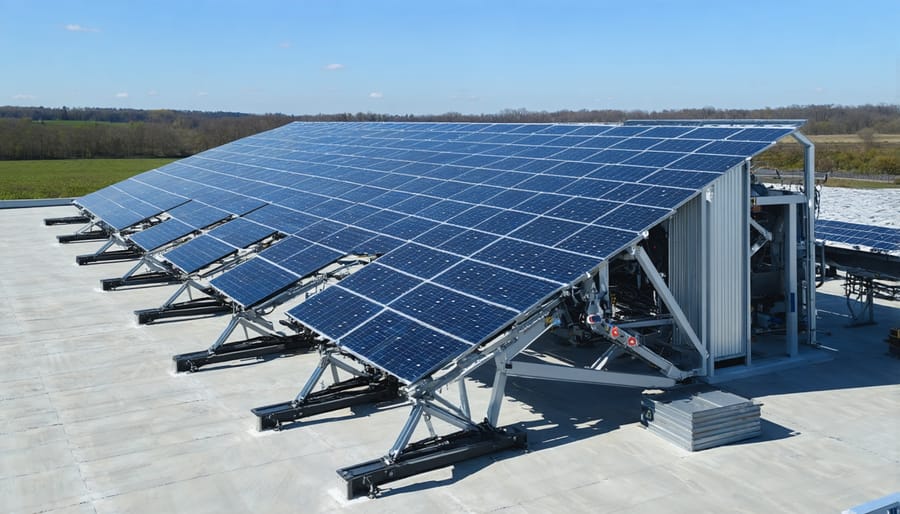
While solar panel production does have environmental impacts, the long-term benefits significantly outweigh the initial environmental costs. A typical solar panel system offsets its manufacturing emissions within 1-4 years of operation, leaving decades of clean energy generation ahead. This positive environmental return on investment makes solar power a crucial tool in our fight against climate change.
The manufacturing process continues to become cleaner and more efficient as technology advances. Companies are increasingly using renewable energy in their production facilities, implementing water recycling systems, and developing innovative recycling programs for end-of-life panels. These improvements are making solar panels even more environmentally friendly from cradle to grave.
When compared to fossil fuel alternatives, solar energy’s environmental footprint is minimal. While coal and natural gas power plants generate emissions throughout their entire operational lifetime, solar panels produce clean electricity for 25-30 years after the initial manufacturing phase. They require minimal maintenance, consume no fuel, and generate no direct emissions during operation.
For homeowners considering solar installation, the environmental benefits extend beyond reduced carbon emissions. Solar panels help decrease air pollution, reduce water consumption in energy generation, and minimize habitat disruption compared to traditional power sources. By choosing solar power, you’re making a long-term investment in both your home’s energy independence and our planet’s future.

